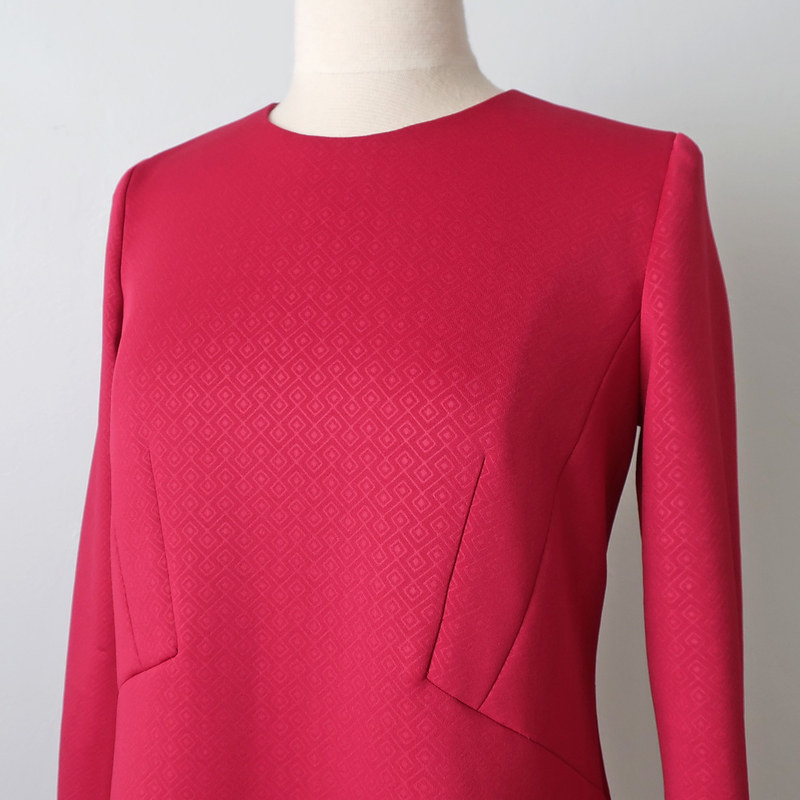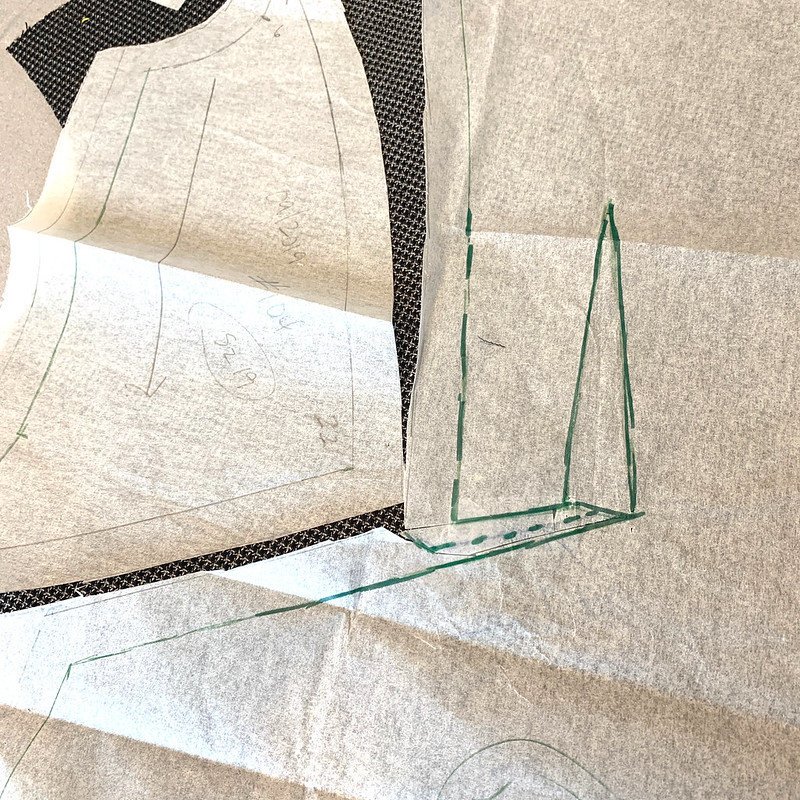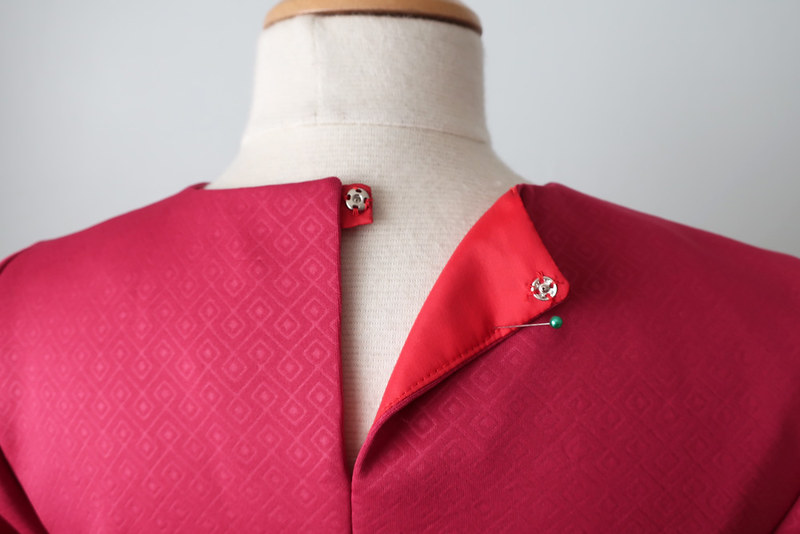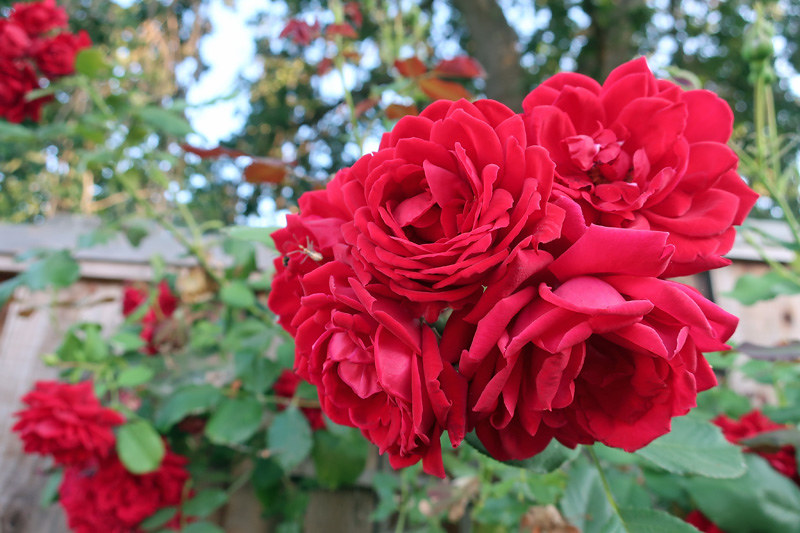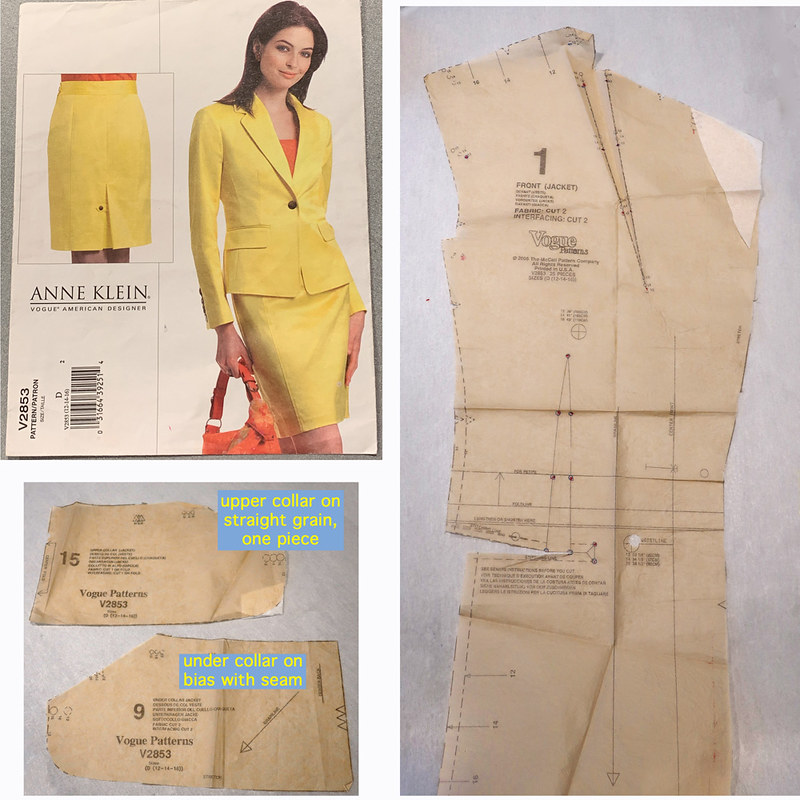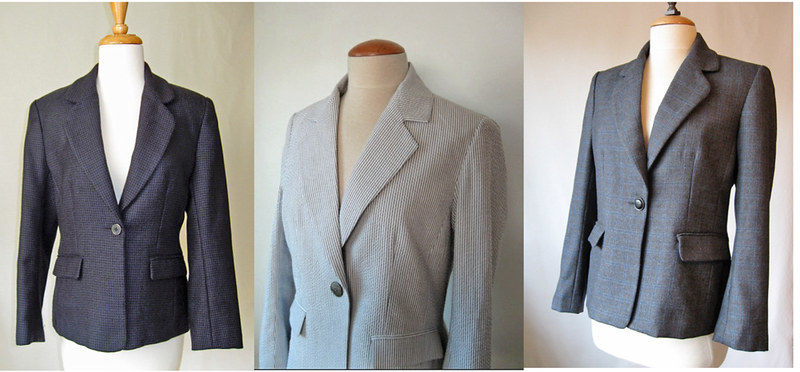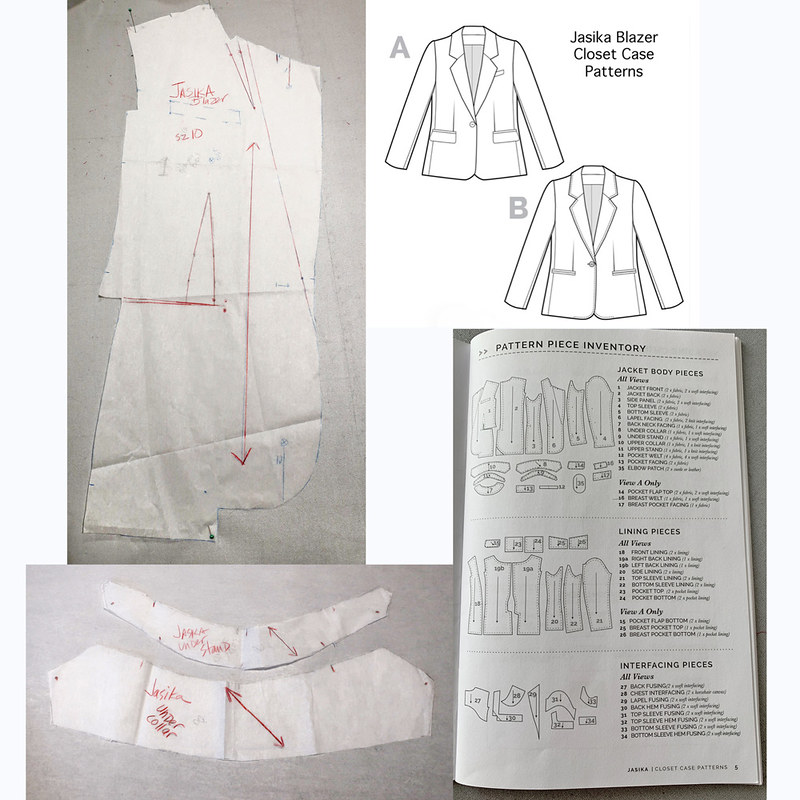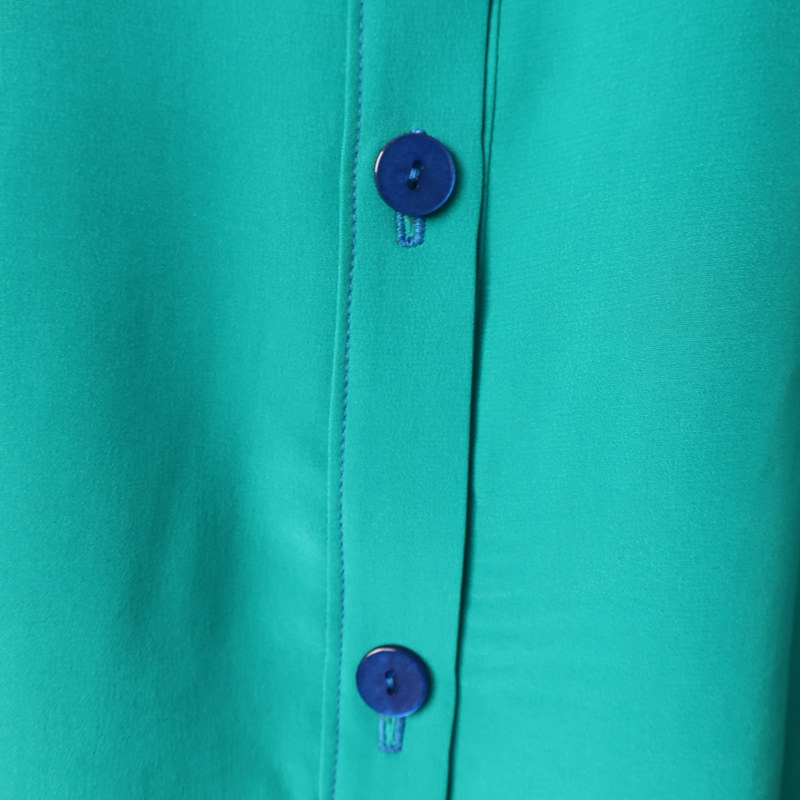I plan to do another post this week, reviewing my sewing year and a few ideas for the next, and perhaps even sneaking in some photos of things that never made it to the blog. But for today, a wool blazer sewn completely with fabrics given to me by the lovely ladies at Hello Stitch. Can you believe these were leftovers after they had a fabric swap? ( I can believe there were no takers for the lining :)

And yes, I'm wearing mostly black - quite unusual for me. I put that black cashmere turtleneck on my list for Santa as I thought it would be very useful with so many bright color jackets that I have made. Although I did sew a shirt that goes with this jacket - a bit more springlike so it will have to wait.
Let's start with some insides. If you read my post earlier this month comparing blazer jacket patterns you have seen this type of jacket collar, which has a stand that gives it some structure. I'm not entirely sold on it, although I have made this pattern three times now so I guess it doesn't bother me.
Sales jackets: the first (with lots of sewing details) and the second.

That's the stage when the jacket is finished, shoulder pads are in and it is just waiting for the lining, which I sew in by hand.
And here's the finished jacket looking a strange color as it was a rainy day and I think I lightened up the photo which was very shadowy. But you can see the details.


See that lining is a bit wild, at least for me. But a very nice fabric, and as I mentioned above, free! I like solid linings in coordinating or matching colors. I guess I'm just a bit boring that way - but remember - no beige in my wardrobe so I guess I can be a bit stringent in my lining choices. Here's the lining sewn in, for the sleeves I rummaged in the linings scraps box to find something solid that was reasonably coordinating, as I really didn't want that leopard/floral/weirdness peeking out at the wrist.
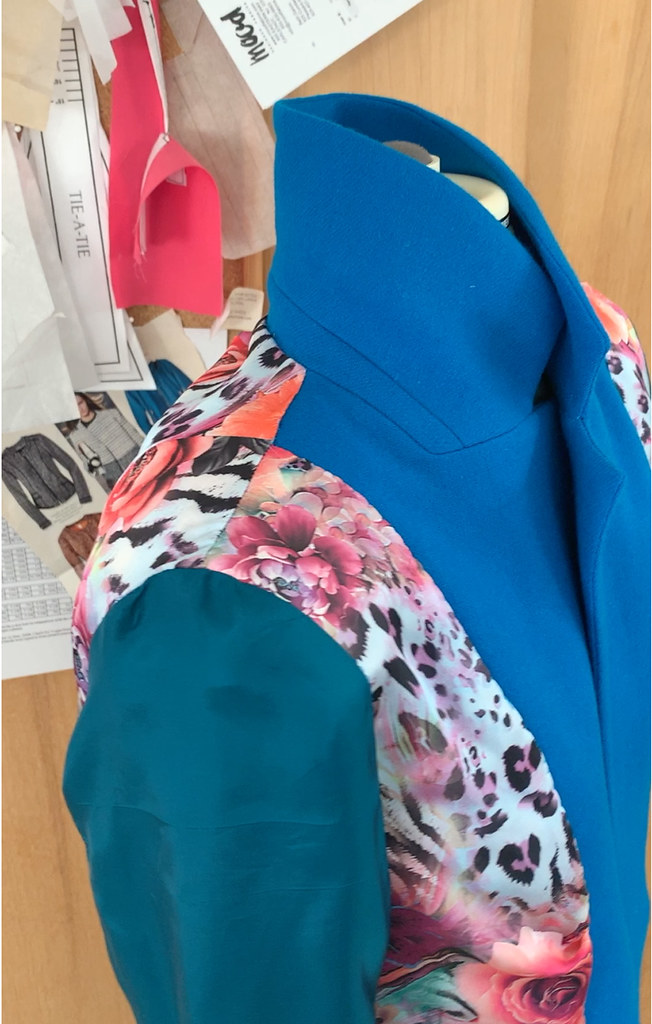
Let's talk buttons and thread. I am not particularly fussy when it comes to sewing garments, I generally use thread in black, white, navy, red, or grey if any of those are in the same color family for the seams and other sewing. The stitches do not show and it's so much easier to see what you are doing if the thread is a slight contrast to the fabric. So I probably sewed this with grey thread, but that does leave the buttonholes as a conundrum.

I always made sample buttonholes to see how the fabric behaves and to see the thread color. I made these using my old Singer machine, as it can make larger buttonholes than the attachment with my newer Singer. Plus the quality is better, you can go around the buttonhole several times, changing the width of the stitch which gives it a more three dimensional look. On those above I probably just went around once to check thread color. I thought the royal blue (top one) looked better than the turquoise which was actually closer to the fabric color. I bought these gorgeous shell buttons at Britex in San Francisco. My two favorite buttons are leather knot buttons or shell buttons and I mostly use those on tailored jackets if I can.
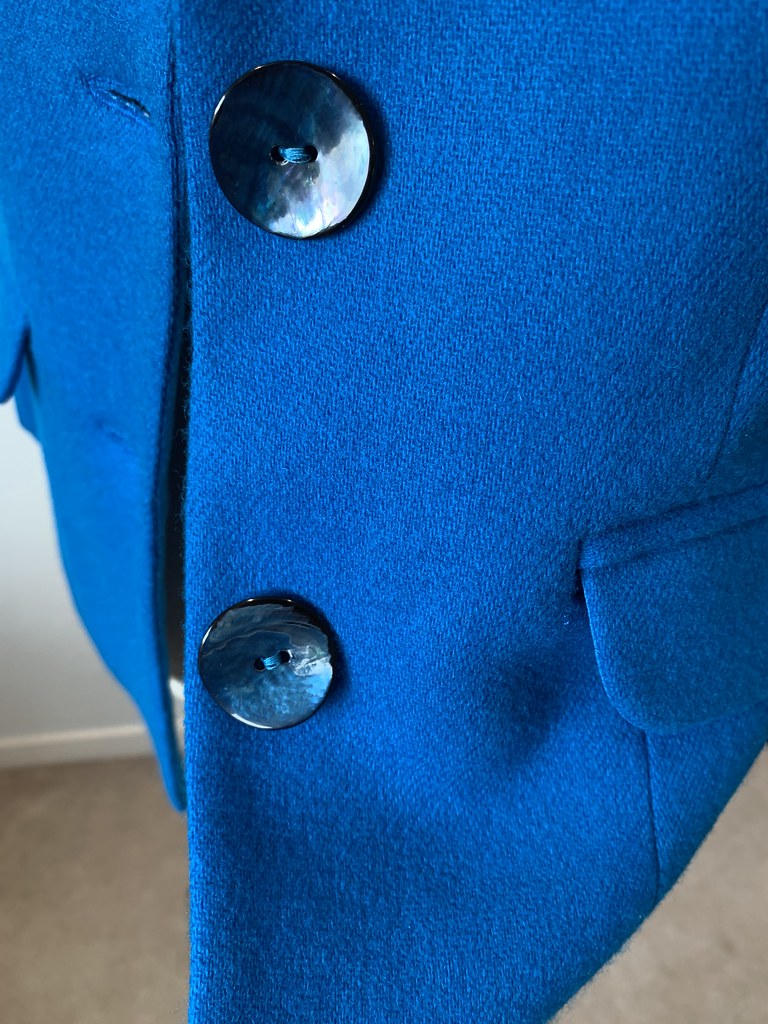

I think the sleeves are a bit wrinkly which is due to the soft fabric. I have kind of a wrinkle mania and could have minimized that by applying fusible interfacing to the whole jacket but that seemed a bit much, also it makes it more stiff and I wanted to keep it a soft and easy jacket (but with crisp lapels :) Why do wrinkles bug me so much? not sure - everyone has their preference and mine is for smooth or even intentionally textured fabrics, but the random wrinkles of wear just annoy me. Psychological analysis for another day, ha ha.
A few more details. I like to use lining inside the pocket flap, reduces bulk.

A look at the little angle at the hem seam allowance that allows the hem to turn up and fit inside smoothly.

A tiny piece of blue silk to wrap around the edge of the facing near the front hem.




Here's a look at at shirt I just made, as I noticed this fabric in my stash seemed to go well with the jacket. Let me know if you think these two items can be worn together. I think with dark denim jeans although it is pretty colorful! I got that cotton/silk voile from Mood back in August, just because I loved the print and those cotton/silk voiles are dreamy to sew and to wear.
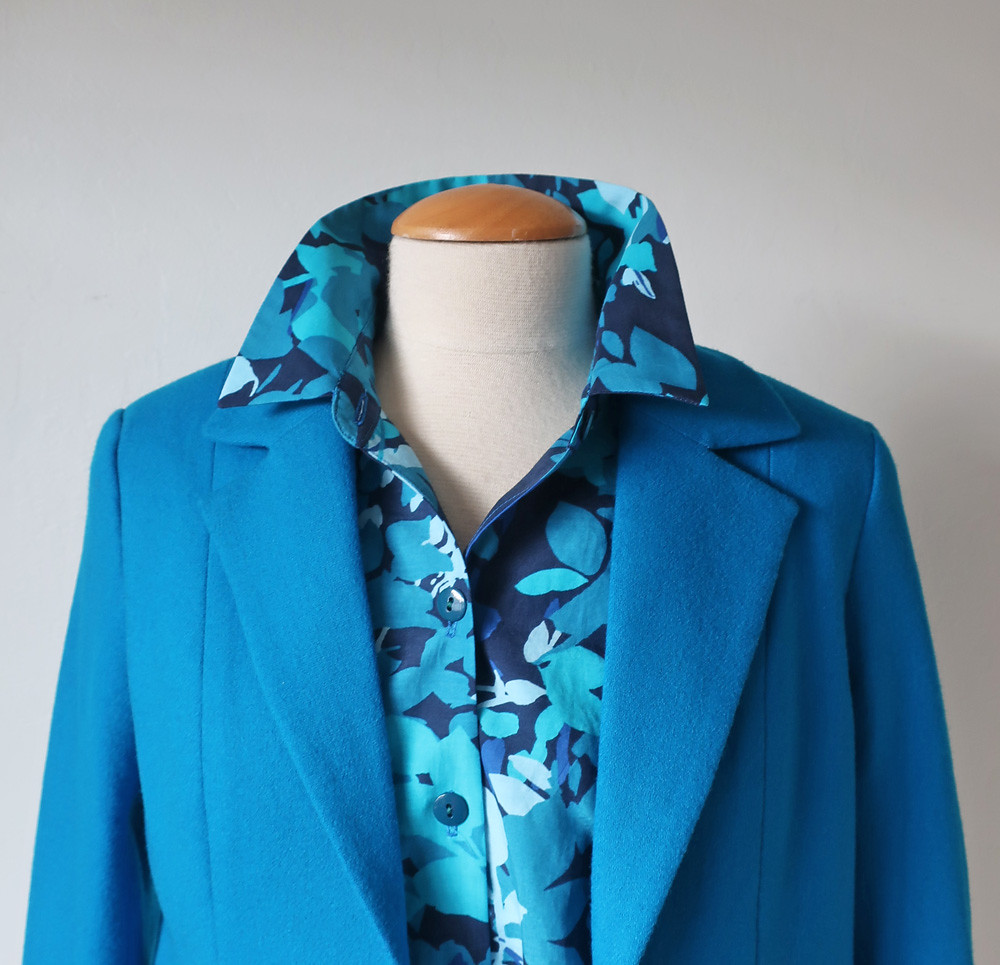
The different color in every image is a bit bothersome, I would say the outdoor photos are the most accurate color of this jacket.
So that's the latest on this blazer. I think I'm ready to put this pattern way back in the file drawer, and try out something new. The lovely owners at Hello Stitch gave me a gift card for Mood so there will be more wonderful fabrics in the near future.
Today I've been sewing on a pair of wool pants, something I haven't made in a while but I did say on Instagram when I posted a peek of this blue jacket that I had fabric leftover and was prepared to go full pantsuit. Now I'm not so sure but in any case I have just made a very wearable pair in black/grey houndstooth as a trial run.
Up next, a roundup of 2019, and a look ahead. We have some great classes scheduled at Hello Stitch, a lot of them are booking up so if you are interested register soon! You can sign up for their newsletter to get details on future classes.
And now I have to dash, my resolution is to organize my fabric stash and sewing room. Stay tuned to see if that happens😉
Happy Sewing, Beth



